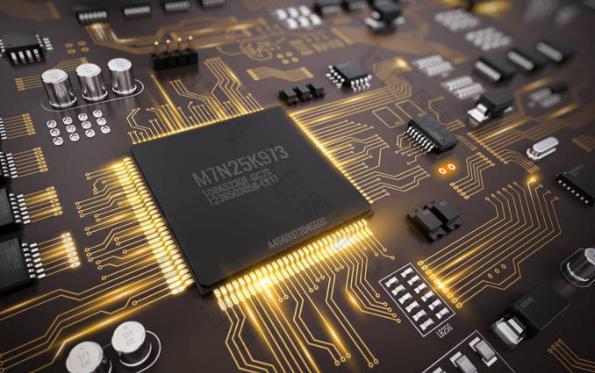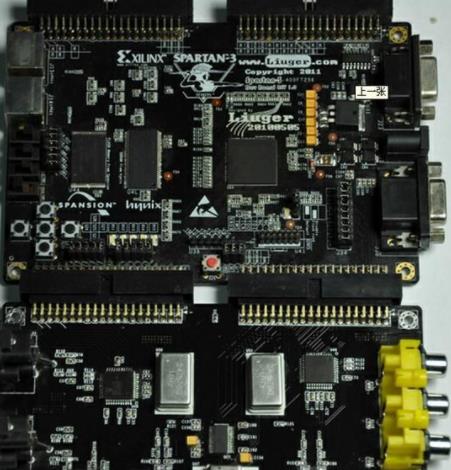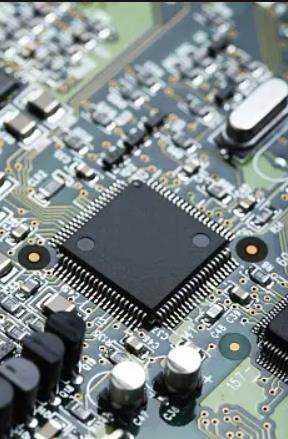Building 6, Zone 3, Yuekang Road,Bao'an District, Shenzhen, China
+86-13410863085Mon.-Sat.08:00-20:00

QC function and SMT chip capacitors and electrolytic capacitors
QC processing in PCBA
Quality is the sum of various elements to meet customer needs. In the PCBA process, quality is an important factor that affects the company's reputation and reputation, and affects whether customers are willing to continue to cooperate. Reflects the characteristics and the sum of characteristics of entities that meet the user's explicit or implicit needs.
The quality requirements in the PCBA process can generally be divided into six categories:
A Efficiency requirements: physical characteristics, functional inspection, data and its life cycle;
B. Applicability requirements: applicability of customer requirements and PCBA board functions;
C Reliability requirements: reliability of PCBA board products;
D Safety requirements: the customer must use it reliably and timely, without causing injury or accident to the user;
E Economic requirements: applicability and customer affordability requirements;
Appearance and aesthetic requirements: considering the customer's psychological feelings and aesthetic values, PCBA boards should be clean and beautiful.
The purpose of process inspection is to:
A. Before mass production, timely find defects and take measures,
It can prevent the occurrence of a large number of defective products
B. In view of the non opportunistic change of quality, inspection shall be carried out during operation to prevent defective products (process inspection shall not only inspect products, but also verify the main process elements (such as 5MIE) that affect product quality. In fact, in the normal production process of mature products, any quality problem can be attributed to the change of one or more elements in 5M1E)
C. Through the implementation of inspection, the defective products of this process are not allowed to flow into the next process, so as to prevent the unqualified products from flowing into the next process to continue processing.
In the PCBA process, quality control is very important, which plays a vital role in the output of data, electronic components and finished products. Sometimes, we may complain that there are too many QC inspection steps in the processing process, which is troublesome and time-consuming. We want to omit various programs, but these are not allowed. Only by strictly implementing every step of production can we deliver to customers. Satisfied finished products.
Difference and Application of Chip Capacitor and Electrolytic Capacitor
Chip capacitor is a kind of widely used capacitor SMT chip processing. People often wonder what is the difference between chip capacitor and another famous electrolytic capacitor Next I'll answer you
1. Differences between Chip Capacitors and Electrolytic Capacitors
1. The full name of chip capacitor is multilayer chip ceramic capacitor, which is the general name of most capacitors that can be packaged with chip, while electrolytic capacitor is a kind of capacitance classification.
2. SMD capacitors are divided into non-polar capacitors and polar capacitors. Polar capacitors are commonly referred to as electrolytic capacitors. However, some electrolytic capacitors are not suitable for SMD packaging, such as aluminum electrolytic capacitors for energy-saving lamps.
3. SMD capacitors are generally small in size, small in capacity and relatively high in accuracy, while electrolytic capacitors are relatively large in size and capacity and have many kinds.
Surface mounting is a processing method in PCB processing industry. It refers to the process of coating solder paste or red glue on the components, installing them through the mounter, and then reflow soldering. Generally speaking, the chip capacitor is smaller than the chip capacitor, which is more suitable for the development of the times.
2. Purpose
1. Chip capacitors have a considerable impact on medium and high frequencies. They are small in size, high in withstand voltage, and low in ESR (several meters) at high-frequency resonant points. They are usually used for filtering medium and high frequencies (100k hundreds of meters). It is preferable to use each resonant frequency band in parallel, such as 102, 103, 104 (i.e. 1nF, 10nF, 100nF) ceramic capacitors. In order to filter low frequency and intermediate frequency, electrolytic capacitors must be considered first. It should be noted that most electrolytic capacitors have polarity, that is, the positive and negative poles must not be reversed. Even if the polarity is unexpectedly reversed when measuring with an ordinary multimeter, the capacitor must be discarded.
2. The disadvantage of ceramic capacitor is that its efficiency varies greatly with temperature (except for Type I medium, but the capacity of Type I medium is not large). For example, if X7R and X5R are within the rated temperature range, the content change is ± 15%, and for Z5U and Y5V medium, the capacity change can reach - 82%. Electrolytic capacitors usually have good temperature characteristics (except for liquid aluminum electrolysis, solid aluminum electrolysis has greatly improved in this respect, but the current withstand voltage rarely exceeds 100V), wide frequency range, excellent DC bias characteristics, stable equivalent series resistance (ESR) and high ripple current resistance.
3. The capacity of ceramic capacitors varies with the applied DC bias voltage. At the same time, ESR also has serious jitter within the rated frequency range. In this respect, ceramic capacitors, tantalum capacitors and solid aluminum electrolysis are incomparable. Electrolytic capacitors (it should be noted that as long as the capacitors using electrolyte as cathode are electrolytic capacitors, the most widely used are aluminum electrolysis, tantalum electrolysis, niobium electrolysis, supercapacitors, etc.) have huge capacity, even farad, with capacity of hundreds to thousands of farad, which is very suitable for energy storage.
In circuit boards, it is usually necessary to consider price and efficiency factors Different types of capacitors have different efficiency advantages It is better to choose the chip or capacitor that suits you
QC processing in PCBA
Quality is the sum of various elements to meet customer needs. In the PCBA process, quality is an important factor that affects the company's reputation and reputation, and affects whether customers are willing to continue to cooperate. Reflects the characteristics and the sum of characteristics of entities that meet the user's explicit or implicit needs.
The quality requirements in the PCBA process can generally be divided into six categories:
A Efficiency requirements: physical characteristics, functional inspection, data and its life cycle;
B. Applicability requirements: applicability of customer requirements and PCBA board functions;
C Reliability requirements: reliability of PCBA board products;
D Safety requirements: the customer must use it reliably and timely, without causing injury or accident to the user;
E Economic requirements: applicability and customer affordability requirements;
Appearance and aesthetic requirements: considering the customer's psychological feelings and aesthetic values, PCBA boards should be clean and beautiful.

The purpose of process inspection is to:
A. Before mass production, timely find defects and take measures,
It can prevent the occurrence of a large number of defective products
B. In view of the non opportunistic change of quality, inspection shall be carried out during operation to prevent defective products (process inspection shall not only inspect products, but also verify the main process elements (such as 5MIE) that affect product quality. In fact, in the normal production process of mature products, any quality problem can be attributed to the change of one or more elements in 5M1E)
C. Through the implementation of inspection, the defective products of this process are not allowed to flow into the next process, so as to prevent the unqualified products from flowing into the next process to continue processing.
In the PCBA process, quality control is very important, which plays a vital role in the output of data, electronic components and finished products. Sometimes, we may complain that there are too many QC inspection steps in the processing process, which is troublesome and time-consuming. We want to omit various programs, but these are not allowed. Only by strictly implementing every step of production can we deliver to customers. Satisfied finished products.
Difference and Application of Chip Capacitor and Electrolytic Capacitor
Chip capacitor is a kind of widely used capacitor SMT chip processing. People often wonder what is the difference between chip capacitor and another famous electrolytic capacitor Next I'll answer you
1. Differences between Chip Capacitors and Electrolytic Capacitors
1. The full name of chip capacitor is multilayer chip ceramic capacitor, which is the general name of most capacitors that can be packaged with chip, while electrolytic capacitor is a kind of capacitance classification.
2. SMD capacitors are divided into non-polar capacitors and polar capacitors. Polar capacitors are commonly referred to as electrolytic capacitors. However, some electrolytic capacitors are not suitable for SMD packaging, such as aluminum electrolytic capacitors for energy-saving lamps.
3. SMD capacitors are generally small in size, small in capacity and relatively high in accuracy, while electrolytic capacitors are relatively large in size and capacity and have many kinds.
Surface mounting is a processing method in PCB processing industry. It refers to the process of coating solder paste or red glue on the components, installing them through the mounter, and then reflow soldering. Generally speaking, the chip capacitor is smaller than the chip capacitor, which is more suitable for the development of the times.
2. Purpose
1. Chip capacitors have a considerable impact on medium and high frequencies. They are small in size, high in withstand voltage, and low in ESR (several meters) at high-frequency resonant points. They are usually used for filtering medium and high frequencies (100k hundreds of meters). It is preferable to use each resonant frequency band in parallel, such as 102, 103, 104 (i.e. 1nF, 10nF, 100nF) ceramic capacitors. In order to filter low frequency and intermediate frequency, electrolytic capacitors must be considered first. It should be noted that most electrolytic capacitors have polarity, that is, the positive and negative poles must not be reversed. Even if the polarity is unexpectedly reversed when measuring with an ordinary multimeter, the capacitor must be discarded.
2. The disadvantage of ceramic capacitor is that its efficiency varies greatly with temperature (except for Type I medium, but the capacity of Type I medium is not large). For example, if X7R and X5R are within the rated temperature range, the content change is ± 15%, and for Z5U and Y5V medium, the capacity change can reach - 82%. Electrolytic capacitors usually have good temperature characteristics (except for liquid aluminum electrolysis, solid aluminum electrolysis has greatly improved in this respect, but the current withstand voltage rarely exceeds 100V), wide frequency range, excellent DC bias characteristics, stable equivalent series resistance (ESR) and high ripple current resistance.
3. The capacity of ceramic capacitors varies with the applied DC bias voltage. At the same time, ESR also has serious jitter within the rated frequency range. In this respect, ceramic capacitors, tantalum capacitors and solid aluminum electrolysis are incomparable. Electrolytic capacitors (it should be noted that as long as the capacitors using electrolyte as cathode are electrolytic capacitors, the most widely used are aluminum electrolysis, tantalum electrolysis, niobium electrolysis, supercapacitors, etc.) have huge capacity, even farad, with capacity of hundreds to thousands of farad, which is very suitable for energy storage.
In circuit boards, it is usually necessary to consider price and efficiency factors Different types of capacitors have different efficiency advantages It is better to choose the chip or capacitor that suits you
Just upload Gerber files, BOM files and design files, and the KINGFORD team will provide a complete quotation within 24h.







